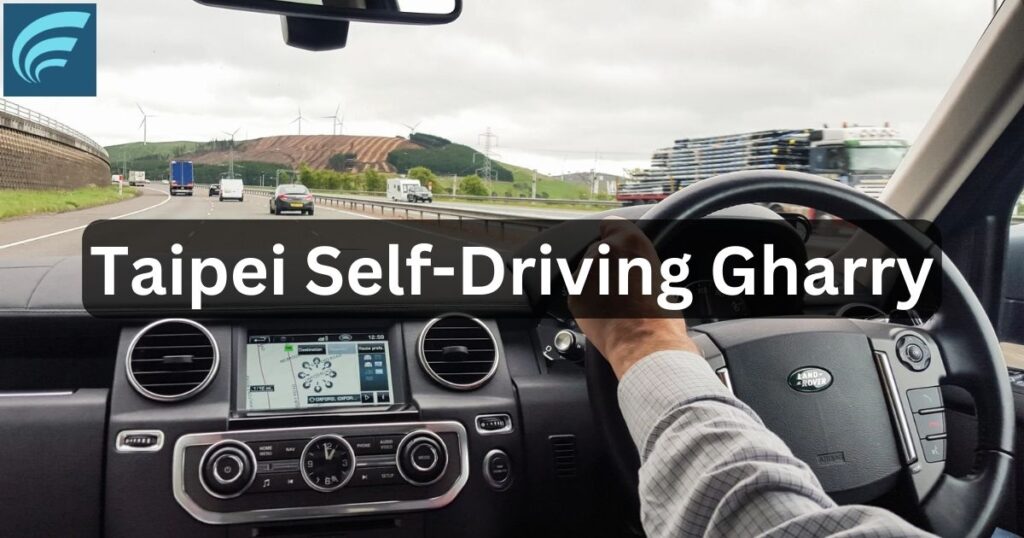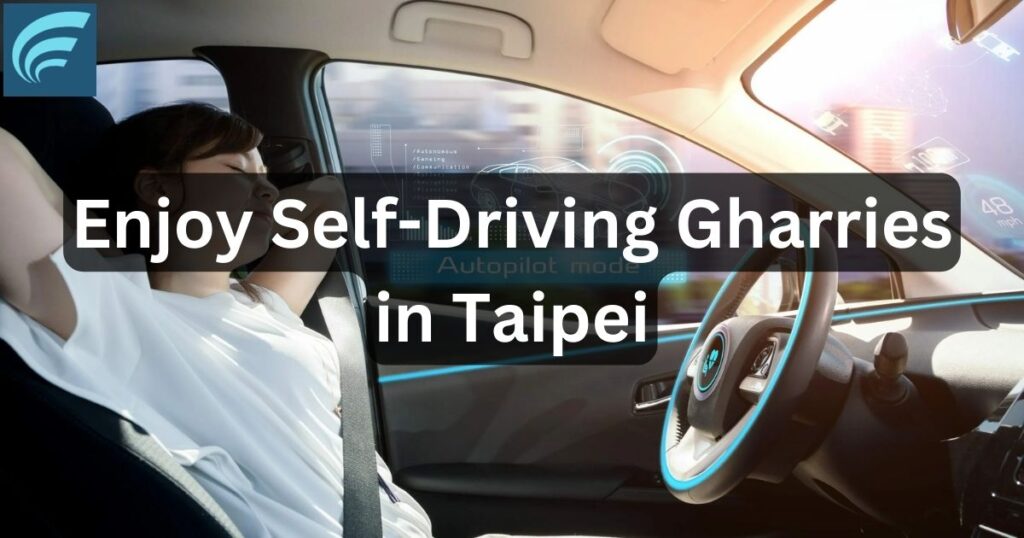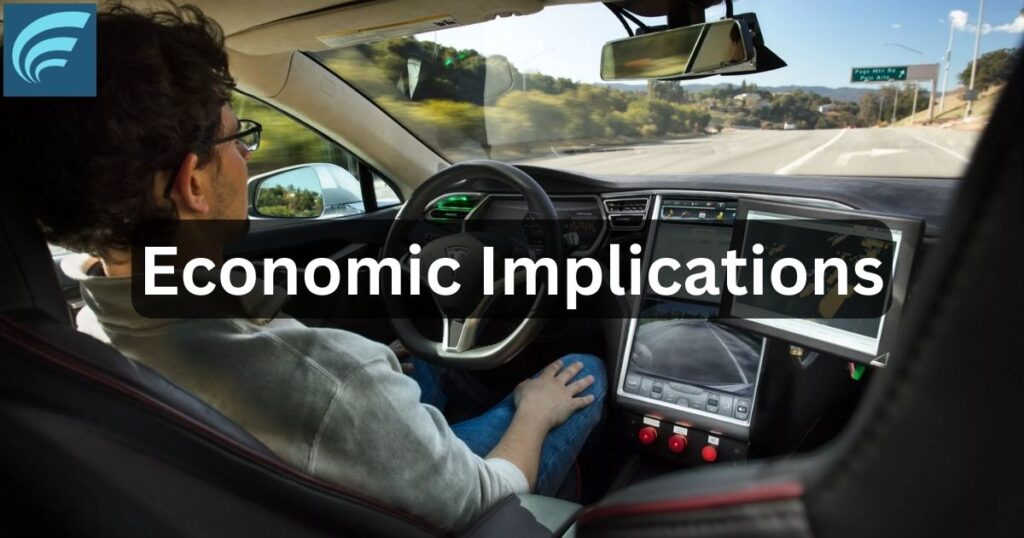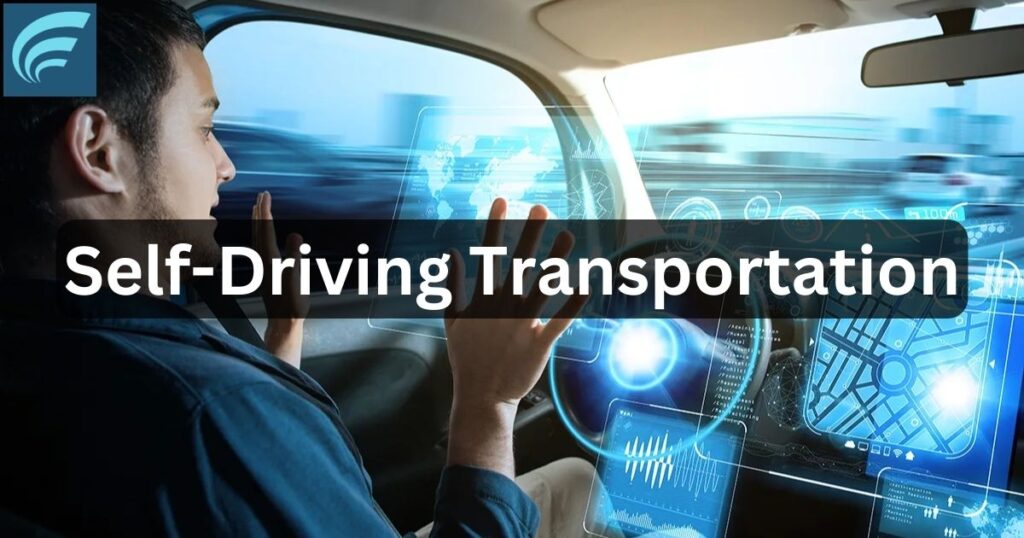Picture this: you’re strolling through the bustling streets of Taipei, Taiwan’s vibrant capital, and a unique sight catches your eye – a classic horse-drawn carriage, known as a “gharry,” glides past you. But wait, there’s no horse! This self-driving gharry is a remarkable fusion of tradition and cutting-edge technology transforming Taipei’s urban transportation.
Taipei’s self-driving gharries represent the city’s commitment to preserving its rich cultural heritage while embracing innovation. These autonomous vehicles redefine how residents and visitors experience Taipei, offering a glimpse into the past while propelling the city toward a sustainable future.
What is a Taipei Self-Driving Gharry?

A Taipei self-driving gharry is a modern adaptation of the traditional horse-drawn carriages that once dominated the city’s streets. These autonomous vehicles have been retrofitted with advanced sensors, cameras, and navigation systems, enabling them to navigate Taipei’s bustling streets without needing a human driver.
Unlike their traditional counterparts, self-driving gharries are powered by electric motors, making them an eco-friendly alternative to conventional transportation. They offer a unique and sustainable solution to urban mobility, blending the charm of the past with the cutting-edge technology of the present.
The Gharry: An Emblem of Heritage
Before delving into the innovative world of self-driving gharries, it’s essential to understand the cultural significance of these iconic vehicles. Gharries, also known as “qieqie” in Taiwanese, have been a part of Taipei’s transportation landscape for centuries, dating back to the Qing Dynasty.
In the past, these horse-drawn carriages were a common sight on the city’s streets, serving as a means of personal transportation and a vital part of the local economy. Gharries were used to transport goods and people and played a crucial role in shaping Taipei’s urban fabric.
As time marched on and more modern modes of transportation emerged, the traditional gharry slowly faded into the background. However, Taipei’s self-driving gharries are breathing new life into this cultural icon, ensuring the city’s heritage remains integral to its future.
How is Taiwan Leading the Way in Innovating this Tradition?
Taiwan, particularly in Taipei, has long been known as a tech hub, leading technological innovation. The development of self-driving gharries is a testament to the country’s commitment to preserving its cultural heritage while embracing cutting-edge advancements.
Creating Taipei’s self-driving gharries involved a collaborative effort between engineers, cultural experts, and city planners. They worked together to design a vehicle incorporating the latest autonomous technology and maintain the traditional gharry’s classic aesthetic.
The result is a seamless blend of tradition and modernity, with self-driving gharries retaining the iconic horse-drawn carriage design while incorporating advanced sensors, cameras, and navigation systems powered by electric motors and lithium-ion batteries.
Taiwan’s leadership in developing self-driving gharries has set an example for other cities worldwide, demonstrating how technology can be harnessed to preserve cultural heritage while addressing modern transportation challenges.
Are the Safety Measures in Self-Driving Gharries Trustworthy?
When it comes to autonomous vehicles, safety is a top priority. Taipei’s self-driving gharries have advanced safety features to ensure passengers’ reliable and secure experience.
These vehicles are outfitted with state-of-the-art sensors, including lidar, radar, and cameras, which constantly monitor their surroundings and detect potential hazards. The navigation systems use detailed digital maps and real-time data to optimize routes and respond to changing traffic conditions, minimizing the risk of accidents.
Self-driving gharries incorporate emergency braking systems, collision avoidance technology, and redundant backup systems to enhance safety further. These measures ensure that the vehicles can safely navigate Taipei’s streets, even in a system failure.
In addition to these technological safeguards, self-driving gharries are also subjected to rigorous testing and safety protocols. Each vehicle undergoes extensive trials in controlled environments before being approved for public use, and safety drivers are always present to monitor the system and intervene if necessary.
Taipei’s commitment to public safety is evident in the impressive safety statistics associated with self-driving gharries. These vehicles have a stellar track record, with significantly lower accident rates than traditional transportation modes.
Exploring Taipei via a Taipei Self-Driving Gharry Adventure
Riding in a self-driving gharry is more than just a mode of transportation – it’s an immersive experience that allows you to explore Taipei’s rich cultural heritage and modern marvels uniquely and unforgettably.
Imagine cruising through the city’s vibrant streets, taking in the sights and sounds of Taipei’s iconic landmarks. From the tranquil beauty of the Longshan Temple to the bustling energy of the Shilin Night Market, a self-driving gharry tour offers a truly one-of-a-kind perspective.
As you glide through the city, your self-driving gharry will provide an informative commentary, sharing fascinating insights into Taipei’s history, culture, and architectural wonders. With its user-friendly interface and accessible design, you can sit back, relax, and enjoy the ride, immersing yourself in the city’s rich tapestry.
Benefits of Self-Driving Gharries for Businesses
Self-driving gharries are revolutionizing urban transportation and providing significant benefits for local businesses in Taipei. These autonomous vehicles offer a range of advantages, including increased efficiency, cost-effectiveness, and enhanced safety.
For businesses involved in logistics and transportation, self-driving gharries represent a game-changer. With their ability to operate around the clock and optimize routes based on real-time data, these vehicles can significantly improve delivery times and reduce operational costs.
Moreover, the advanced safety features of self-driving gharries ensure that precious cargo is transported with minimal risk of damage or loss, providing businesses with peace of mind and protecting their bottom line.
Self-driving gharries offer a unique and sustainable solution in shared transport services. Companies can leverage this technology to provide on-demand transportation services catering to Taipei’s residents’ and visitors’ needs.
By partnering with local businesses, self-driving gharries can enhance the customer experience. Imagine booking a ride to your favorite restaurant and enjoying a scenic tour of the city’s highlights, all while contributing to a more sustainable future for Taipei.
Optimal Moments to Enjoy Self-Driving Gharries in Taipei

Taipei’s climate offers diverse weather conditions, and choosing the right time to experience a self-driving Gharry ride can greatly enhance your overall experience.
The city’s mild winters and hot, humid summers make spring (April to June) and autumn (September to November) ideal for a self-driving gharry adventure. Taipei has pleasant temperatures and stunning natural scenery during these periods, providing the perfect backdrop for a memorable journey.
In the spring, you can witness the city’s parks and gardens come alive with vibrant cherry blossoms, while autumn offers a tapestry of warm colors as the leaves turn golden and red. Imagine cruising through Taipei’s lush urban oases, such as Da’an Forest Park or Yangmingshan National Park, during these picturesque seasons, enjoying the beauty of nature from the comfort of your self-driving gharry.
Women in Technology and Their Involvement in the Gharry Project
The development of Taipei’s self-driving gharries is a triumph of innovation but also a testament to the vital role of women in the technology sector. This project has showcased the incredible contributions of female engineers, developers, and project leaders, breaking down barriers and inspiring a more inclusive and diverse tech industry.
Women have been instrumental in every aspect of the self-driving gharry initiative, from design and programming to testing and deployment. Their unique perspectives and problem-solving skills have been invaluable in overcoming challenges and ensuring the success of this groundbreaking project.
The involvement of women in the self-driving Gharry project highlights the importance of diversity in driving innovation. By bringing together a diverse team of experts, Taipei has created a transportation solution that seamlessly blends tradition and technology, catering to the needs of all residents and visitors.
Enhancing User Experience and Accessibility Functions
Taipei’s self-driving gharries are not just about cutting-edge technology; they are also designed with a strong emphasis on user experience and accessibility. These vehicles are built to accommodate riders of all abilities, ensuring that everyone can enjoy the convenience and comfort of this innovative mode of transportation.
One of the key features that enhance accessibility is the low-floor design of the self-driving gharries. This allows for easy boarding and disembarking, making it accessible for individuals with mobility limitations, seniors, and families with young children.
In addition, the vehicles are equipped with voice-controlled systems and intuitive touchscreen interfaces, enabling passengers to request rides, select destinations, and easily customize their experience. These user-friendly functions cater to a wide range of users, ensuring that the self-driving gharry experience is inclusive and enjoyable.
To further enhance accessibility, the self-driving gharries are designed to integrate seamlessly with public transit networks, providing first/last mile connections that can significantly improve mobility for riders of all abilities. This commitment to accessible design enhances Taipei’s residents’ lives and sets an example for cities worldwide to follow.
Conserving the Environment
One of the most significant benefits of Taipei’s self-driving gharries is their positive environmental impact. These electric vehicles are powered by lithium-ion batteries, making them a sustainable and eco-friendly alternative to traditional modes of transportation that rely on fossil fuels.
Self-driving gharries significantly reduce Taipei’s greenhouse gas emissions and air pollution by eliminating the need for gasoline or diesel engines. This contributes to the city’s efforts to combat climate change and promotes a healthier living environment for residents.
Moreover, optimizing routes and traffic flow facilitated by autonomous technology can decrease overall fuel consumption and further minimize the environmental impact of transportation in Taipei.
The sustainability credentials of self-driving gharries extend beyond their electric power source. The vehicles are designed to focus on efficiency, utilizing lightweight materials and aerodynamic shapes to maximize energy efficiency and reduce waste.
By embracing self-driving gharries as a sustainable solution for urban mobility, Taipei is setting an example for cities worldwide. This commitment to environmental stewardship benefits the city’s residents and contributes to global efforts to create a greener, more sustainable future.
Economic Benefits

Introducing self-driving gharries in Taipei has profoundly impacted the city’s economy, generating new opportunities and supporting local businesses.
One of the most significant economic benefits is job creation. The development, deployment, and maintenance of self-driving gharries have created numerous high-skilled jobs in software engineering, artificial intelligence, and vehicle maintenance. These jobs contribute to the local economy, foster innovation, and promote the growth of Taipei’s tech ecosystem.
In addition, self-driving gharries have opened up new avenues for entrepreneurship and business development. Local companies have seized the opportunity to collaborate with the self-driving gharry project, offering tailored and unique passenger experiences. These partnerships have created innovative businesses, such as shared transport services, tourism initiatives, and on-demand delivery solutions.
Furthermore, self-driving gharries have proven to be a significant draw for tourists, attracting visitors from around the world eager to experience this unique blend of tradition and technology. The influx of tourism has boosted local businesses, including hotels, restaurants, and retail establishments, generating additional revenue and contributing to Taipei’s economic prosperity.
Top Places to Explore with the Taipei Self-Driving Gharry
Taipei is a city brimming with cultural and historical treasures, and a self-driving Gharry tour offers the perfect opportunity to experience these wonders uniquely and memorably. Here are some of the top destinations to explore while riding in a Taipei self-driving gharry:
Skylines Tower
Towering above Taipei’s skyline, the Skylines Tower is a true architectural marvel. This iconic skyscraper features an intricate design that blends traditional Chinese craftsmanship with modern engineering. As you approach the tower in your self-driving gharry, you’ll be struck by its sheer height and intricate details, making it a must-visit destination for any architecture enthusiast.
National Palace Museum
The National Palace Museum is a treasure trove of Chinese art and history, housing an extensive collection of rare artifacts, paintings, and calligraphy. A self-driving gharry tour allows you to explore this world-renowned museum in style, providing a unique perspective on the museum’s stunning architecture and immersive exhibits.
Shilin Night Market
No trip to Taipei is complete without experiencing the vibrant energy of the Shilin Night Market. This bustling street market is a foodie’s paradise, offering a dizzying array of delicious street food, from savory snacks to sweet treats.
As you navigate the crowded alleys in your self-driving gharry, you’ll be immersed in the sights, sounds, and tantalizing aromas that make this market a beloved local institution.
Longshan Temple
Built-in 1738, the Longshan Temple is a stunning example of traditional Taiwanese architecture and a spiritual sanctuary for locals and visitors alike. As you approach the temple in your self-driving gharry, you’ll be awestruck by its intricate carvings, vibrant colors, and serene atmosphere.
This historic site offers a glimpse into Taipei’s rich cultural heritage and is a must-visit destination for those seeking to understand the city’s religious and architectural roots.
Improving the Customer Experience

Taipei’s self-driving gharries are not just a means of transportation; they are designed to provide a truly exceptional customer experience. From the moment you step into one of these autonomous vehicles, you’ll be immersed in a world of comfort, convenience, and unique perspectives.
The self-driving gharries have comfortable seating, ample legroom, and climate control, ensuring every ride is a pleasure. Additionally, they offer Wi-Fi connectivity and touchscreen displays, allowing passengers to access information, entertainment, and even guided commentary during their journey.
To further enhance the customer experience, self-driving gharries feature built-in digital wallets, enabling passengers to easily pay for their rides and any additional services or amenities they may desire.
But beyond these physical comforts, self-driving gharries offer a truly immersive experience that connects passengers with Taipei’s rich cultural tapestry. Gliding through the city’s streets, you’ll be treated to a unique perspective on the city’s landmarks, history, and architecture, with informative commentary and insights provided by the vehicle’s AI-powered systems.
By prioritizing the customer experience, Taipei’s self-driving gharries are transforming urban transportation and redefining how people connect with the city. Each ride becomes a memorable journey, leaving a lasting impression on visitors and locals alike.
Present and Future Trends in Self-Driving Gharries
While Taipei’s self-driving gharries are currently in the early stages of development and deployment, the future holds exciting possibilities for this innovative mode of transportation.
Only a handful of prototypes are navigating the city’s streets, but promising initial trials have paved the way for broader testing and increased investment. Taipei has set an ambitious goal to roll out 100 autonomous gharries for public and tourist rides by 2025. If safety concerns are addressed effectively, this number could grow significantly, potentially serving passengers across Taiwan.
As the technology behind self-driving gharries advances, costs are expected to decline, making widespread adoption more affordable for private and public transportation providers. This could lead to innovative business models, such as shared gharry platforms where Taiwanese communities collectively own and operate a fleet of autonomous vehicles.
Looking further into the future, the reach of self-driving gharries may extend beyond Taiwan’s borders, finding a place in global cities striving for sustainable mobility solutions. Similar initiatives are already sprouting worldwide, automating traditional transport modes like tuk-tuks, rickshaws, and carriages.
Collaborative efforts between Taiwan and international partners could accelerate the innovation and adoption of these intelligent vehicles, leading to a worldwide transformation in urban transportation.
Dealing with Cybersecurity Issues

As self-driving vehicles become increasingly connected and reliant on digital systems, cybersecurity has emerged as a critical concern. Hacking into these systems could lead to physical harm, disrupt transportation networks, or compromise valuable data, making cybersecurity a top priority for the developers of Taipei’s self-driving gharries.
Multiple layers of defense have been implemented to protect the self-driving gharries and their passengers to address these concerns. Firewalls, access controls, and encryption safeguard everything from sensor inputs to passenger details, creating a secure digital environment.
Regular vulnerability scans are conducted to proactively identify and address any weaknesses in the system, ensuring that potential threats are mitigated before they can pose a risk. Automated security patches are deployed over the air, keeping the protections up-to-date without physical maintenance.
A dedicated cybersecurity team constantly monitors the system, scanning for anomalies and implementing measures to catch and address any potential issues before they escalate. Denial-of-service attacks are resisted through DDoS mitigation, and data is segmented to isolate vital vehicle functions, even if one component is compromised.
Digital “tamper seals” alert authorities to unauthorized access attempts in real-time, further enhancing security measures. Rigorous testing and collaboration with cybersecurity experts ensure that self-driving gharries remain resilient against complex and evolving digital threats, prioritizing passengers’ safety and data integrity.
Opportunity for Expansion
If the initial trials and deployments of self-driving gharries in Taipei prove successful, there is significant potential for expanding these services to other prominent cities in Taiwan and beyond.
The flexible design of self-driving gharries allows for easy fleet expansion as demand rises, not only in Taiwan’s main municipalities but also in county-level cities and New Taipei City. As the technology matures and public acceptance grows, self-driving gharries could become a common sight on the streets of cities across Taiwan.
On a global scale, gharries could be a practical solution for densely populated urban areas, offering an exportable model for sustainable urban mobility. Collaborating with local electric vehicle companies and sharing expertise could pave the way for launching self-driving gharry services internationally.
Asia, with its cultural acceptance of gharries and similar traditional modes of transportation, stands out as a significant potential market for expansion. Cities across the continent could adapt the Taipei model to create autonomous versions of tuk-tuks, rickshaws, or other iconic vehicles.
With their sustainable features, adaptable design, and proven track record in Taipei, the long-term global expansion of self-driving gharries seems entirely feasible. As more cities worldwide grapple with transportation challenges and seek innovative solutions, Taipei’s self-driving gharries could serve as a blueprint for preserving cultural heritage while embracing cutting-edge technology.
Economic Implications

Introducing self-driving gharries in Taipei has had far-reaching economic implications, extending beyond the immediate benefits of job creation and tourism boosts. These autonomous vehicles can reshape the city’s economic landscape, fostering entrepreneurship, supporting local businesses, and addressing potential challenges related to job displacement.
As mentioned earlier, the development, deployment, and maintenance of self-driving gharries have created numerous high-skilled jobs in fields such as software engineering, artificial intelligence, and vehicle maintenance. These jobs contribute to the local economy, foster innovation, and promote the growth of Taipei’s tech ecosystem, attracting talent and investment worldwide.
Self-driving gharries have opened up new avenues for entrepreneurship and business development. Local companies have seized the opportunity to collaborate with the self-driving gharry project, offering tailored and unique passenger experiences. These partnerships have led to innovative businesses, such as shared transport services, tourism initiatives, and on-demand delivery solutions, driving economic growth and diversification.
However, there are also potential challenges associated with the widespread adoption of autonomous transportation. While self-driving gharries create new jobs, there is a concern about possible job displacement in traditional driving roles, such as taxi drivers or delivery workers.
To address this concern, Taipei has prioritized workforce retraining and upskilling programs, helping workers transition into new roles and industries and ensuring that the benefits of technological progress are shared equitably.
Furthermore, the city has explored partnerships with local businesses to find creative solutions, such as integrating traditional drivers into the self-driving gharry ecosystem as customer service representatives or ambassadors, leveraging their expertise and knowledge of the city to enhance the overall customer experience.
Taipei is positioning itself as a global transition toward autonomous transportation leader by fostering an environment that encourages innovation, supports local businesses, and addresses potential challenges head-on.
The economic implications of self-driving gharries extend far beyond their immediate impact, shaping the city’s future and serving as a model for other urban centers to emulate.
Self-Driving Transportation: A Sustainable Path or Fleeting Fad?

As the world grapples with the pressing challenges of climate change and urban congestion, the adoption of self-driving transportation has been hailed as a potential solution. However, the question remains: is autonomous transportation truly a sustainable path, or is it merely a fad?
On the one hand, self-driving vehicles like Taipei’s gharries offer several sustainability benefits. By leveraging electric powertrains and eliminating the need for traditional fossil fuel-based engines, these autonomous vehicles significantly reduce greenhouse gas emissions and contribute to cleaner air in urban environments.
Additionally, the optimization of routes and traffic flow facilitated by autonomous technology can decrease overall fuel consumption, further minimizing the environmental impact of transportation.
Moreover, the sustainability credentials of self-driving vehicles extend beyond their electric power sources. These vehicles are designed with a focus on efficiency, utilizing lightweight materials and aerodynamic shapes to maximize energy efficiency and reduce waste.
The adoption of shared mobility models, where multiple riders can share a single self-driving vehicle, also has the potential to reduce the number of cars on the road and alleviate urban congestion.
However, the long-term sustainability of self-driving transportation depends on several factors. The energy sources used to power these vehicles, the manufacturing practices involved in their production, and the overall lifespan and recyclability of these vehicles all play a crucial role in determining their environmental impact.
If self-driving vehicles continue to rely on energy sources contributing to greenhouse gas emissions or their production involves unsustainable practices, their sustainability credentials may be compromised. Additionally, if these vehicles have a relatively short lifespan and are not easily recyclable, their environmental impact could be significant.
Furthermore, there are concerns about the potential for self-driving vehicles to induce additional travel demand, as the convenience and affordability of autonomous transportation could encourage more people to use these services, potentially leading to an overall increase in vehicle miles traveled and associated emissions.
Despite these concerns, the potential for self-driving transportation to contribute to a more sustainable future remains significant. By prioritizing the use of renewable energy sources, implementing sustainable manufacturing practices, and promoting shared mobility models, self-driving vehicles could emerge as a long-term solution to urban transportation challenges.
Ultimately, the sustainability of self-driving transportation will depend on the collective efforts of policymakers, urban planners, technology companies, and the general public. By embracing a holistic approach that addresses autonomous transportation’s environmental, economic, and social implications, cities like Taipei can pave the way for a sustainable future that seamlessly blends tradition and technology.
How Self-Driving Gharries are Shaping Taipei’s Cultural Scene

The introduction of self-driving gharries in Taipei has transcended the realm of transportation, shaping the city’s cultural scene and fostering a deeper connection between residents, visitors, and the unique tapestry of Taipei’s heritage.
These autonomous vehicles have become more than just a mode of transportation; they have emerged as symbols of Taipei’s innovative spirit and commitment to blending technological progress with cultural preservation. As they glide through the city’s streets, self-driving gharries are a constant reminder of the city’s rich history and ability to adapt to the demands of the modern era.
The interaction between residents, tourists, and the city has been remarkably transformed thanks to self-driving gharries. These vehicles offer a fresh and immersive perspective on experiencing Taipei’s landmarks and local lifestyle, allowing passengers to connect with the city’s past while embracing its future.
As visitors explore iconic sites like the Longshan Temple or the Shilin Night Market from the comfort of a self-driving gharry, they gain a deeper appreciation for the rich cultural heritage that has shaped Taipei’s identity.
The informative commentary and insights provided by the vehicles’ AI-powered systems bridge the past and present, enriching the overall experience and fostering a greater understanding of the city’s cultural tapestry.
For residents, self-driving gharries have become a source of pride and a symbol of Taipei’s ability to innovate while preserving its roots. These vehicles have reignited a sense of appreciation for the city’s history and have sparked conversations about embracing tradition in the face of rapid technological change.
Self-driving gharries have also opened new avenues for cultural expression and artistic collaboration. Local artists and designers have found inspiration in these vehicles, creating unique installations, public art projects, and fashion lines that celebrate the fusion of tradition and technology. These creative endeavors add vibrancy to Taipei’s streets and serve as a testament to the city’s resilience and ability to adapt to the demands of the modern world.
In a constantly evolving city, self-driving gharries have emerged as a reminder of Taipei’s rich heritage and commitment to preserving its cultural identity. As these autonomous vehicles continue to navigate the city’s bustling streets, they will undoubtedly shape Taipei’s cultural scene for years to come, serving as a bridge between the past and the future and inspiring residents and visitors to embrace the city’s unique blend of tradition and innovation.
Read More Posts
Vanessawest.tripod – Everything You Need To Know About It
Best Home Security Companies In Cleveland, Ohio
Conclusion
In the heart of Taipei, the Self-Driving Gharry seamlessly blends tradition and tech, embodying Taiwan’s rich history and cutting-edge innovation. This autonomous marvel, a modern twist on the classic horse-drawn carriage, navigates the vibrant city streets with safety and style.
Beyond a mere ride, it’s a journey through time, showcasing the cultural pride of the Qing Dynasty’s “qieqie.” Spearheaded by women in technology, this project champions diversity and inclusivity. The Gharry transforms urban transit and catalyzes economic growth, offering efficient, cost-effective, and eco-friendly solutions. As it weaves through iconic landmarks, the Gharry enhances the user experience, creating lasting memories.
With a commitment to cybersecurity, expansion plans, economic implications, and sustainable credentials, the Taipei Self-Driving Gharry emerges as an icon shaping Taipei’s cultural tapestry. It’s more than just a ride; it’s a testament to Taiwan’s ability to navigate tradition into the future.











